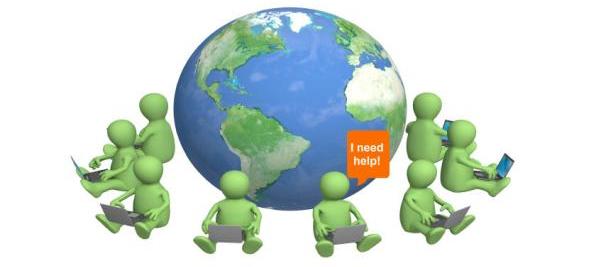And there you have a group of (effectively) strangers who were exerting the pressure not to intervene, not to help; and it’s very difficult to rebel!”
This Bystander Effect is demonstrated in the following video [3 min.]:
Using Other People’s Behavior As Clues To Reality
There are, in fact, many reasons why bystanders in groups fail to act in emergency situations, but social psychologists have focused most of their attention on two major factors. According to a basic principle of social influence, bystanders monitor the reactions of other people in an emergency situation to see if others think that it is necessary to intervene. Each person uses others’ behavior as clues to reality. Since everyone is doing exactly the same thing (nothing), they all conclude from the inaction of others that help is not needed. This is an example of pluralistic ignorance or social proof.
The other major obstacle to intervention is known as diffusion of responsibility. This occurs when observers all assume that someone else is going to intervene and so each individual feels less responsible and refrains from doing anything.”
Bystander Effect Extends To Cyberspace
1st quote source: YouTube Video: Bystander Effect 2nd & last quote source: Wikipedia/Bystander Effect Other quote sources: http://www.psychwiki.com/wiki/Bystander_EffectThe bystander effect also extends beyond reality and into cyberspace. Specifically, in a study performed by Markey (2000), the experiment focused on the amount of time it took a bystander to provide assistance. The researchers examined the effects of the gender of an individual seeking help by measuring participant response time (dependent variable). The perceived gender was manipulated by the usage of a male or female screen name in an Internet chat room (independent variable). The treatment conditions examined the number of people present in the chat (two to nineteen), and then asked the stimulus question: ‘Can anyone tell me how to look at someone’s profile?’
The findings reflect a correlation between the number of people present in a computer-mediated chat group and the amount of time it took for an individual to receive help. The higher the number of participants, the longer it took for someone to help. This research reveals that bystander interventions in Internet chat groups reflect the same patterns as interaction in non-computer based environments.”
The Bystander Effect was first demonstrated in the laboratory by John Darley and Bibb Latane in 1968. These researchers launched a series of experiments that resulted in one of the strongest and most replicable effects in social psychology.”

